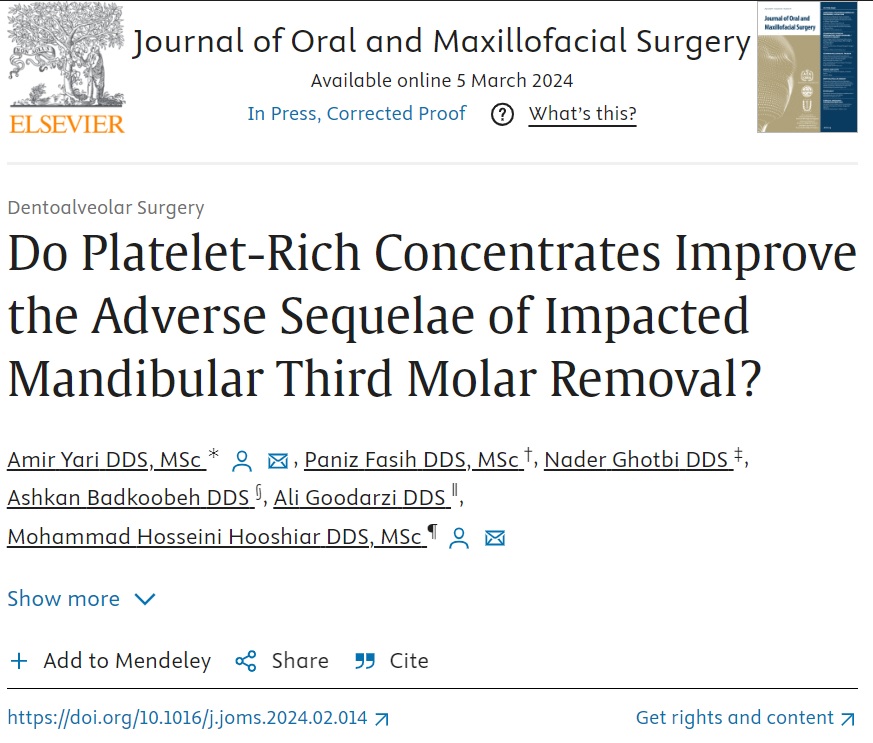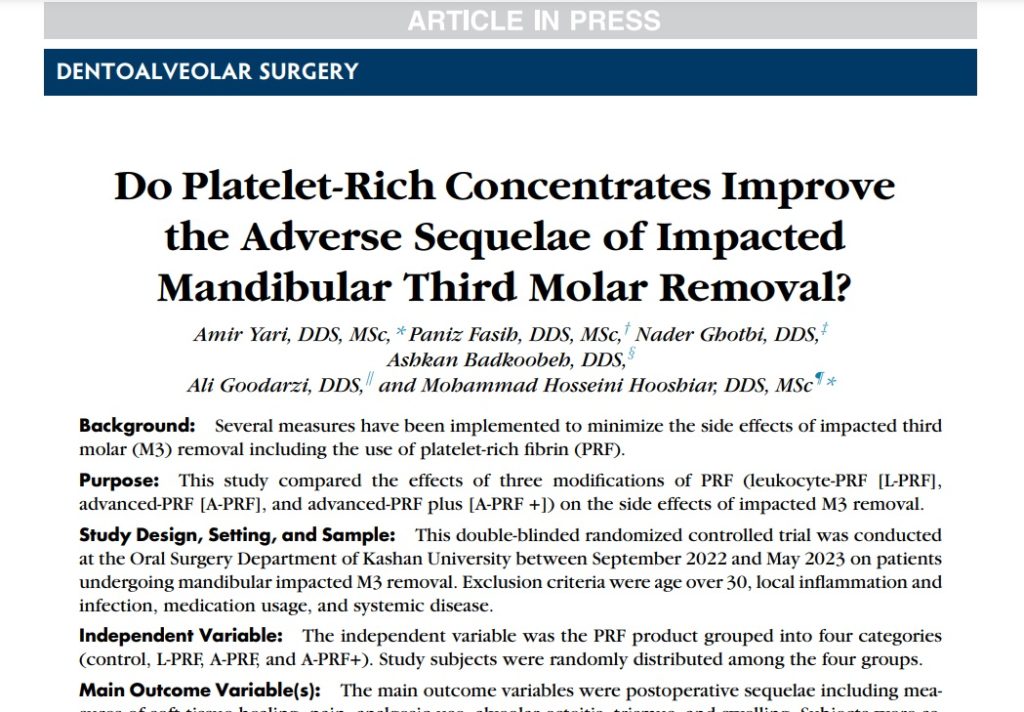
A new study by Dr. Yari has been published by the Journal of Oral and Maxillofacial Surgery, the official publication of the American Association of Oral and Maxillofacial Surgery, and the ranked#3 journal in the field of oral and maxillofacial surgery.

Link to full-text: https://www.sciencedirect.com/science/article/pii/S0278239124001307?dgcid=author
Do Platelet-Rich Concentrates Improve the Adverse Sequelae of Impacted Mandibular Third Molar Removal?
Background
Several measures have been implemented to minimize the side effects of impacted third molar (M3) removal including the use of platelet-rich fibrin (PRF).
Purpose
This study compared the effects of three modifications of PRF (leukocyte-PRF [L-PRF], advanced-PRF [A-PRF], and advanced-PRF plus [A-PRF +]) on the side effects of impacted M3 removal.
Study Design, Setting, and Sample
This double-blinded randomized controlled trial was conducted at the Oral Surgery Department of Kashan University between September 2022 and May 2023 on patients undergoing mandibular impacted M3 removal. Exclusion criteria were age over 30, local inflammation and infection, medication usage, and systemic disease.
Independent Variable
The independent variable was the PRF product grouped into four categories (control, L-PRF, A-PRF, and A-PRF+). Study subjects were randomly distributed among the four groups.
Main Outcome Variable(s)
The main outcome variables were postoperative sequelae including measures of soft tissue healing, pain, analgesic use, alveolar osteitis, trismus, and swelling. Subjects were assessed at baseline and on days 1, 2, 3, and 7 postsurgery.
Covariates
Age, sex, duration of surgery, and side of surgery were the covariates.
Analyses
Changes at different time points were analyzed using repeated measures analysis of variance. Pairwise comparisons were performed if significant. P values ≤.05 were considered statistically significant.
Results
The sample consisted of 64 subjects (16 per group). All three modifications of PRF yielded significantly better soft tissue healing index than the control group on days 2, 3, 7, and 14 postoperatively (P > .05). A-PRF and A-PRF + had significantly better healing index than L-PRF on the third day (P = .02, P = .01). All the study groups significantly reduced visual analog scale pain score than the control group on days 1, 2, and 3. A-PRF and A-PRF + had significantly lower visual analog scale scores than L-PRF on the second day (P = .003, P = .02). No significant difference was found in maximum mouth opening during follow-up sessions (P = .2). Study groups had less facial swelling on days 2 and 3 than the control group (P < .05).
Conclusion and Relevance
L-PRF, A-PRF, and A-PRF + can improve postoperative outcomes after M3 removal but may not impact trismus. A-PRF and A-PRF + may be more effective than L-PRF in promoting soft tissue healing and reducing pain. A-PRF and A-PRF + have comparable results.